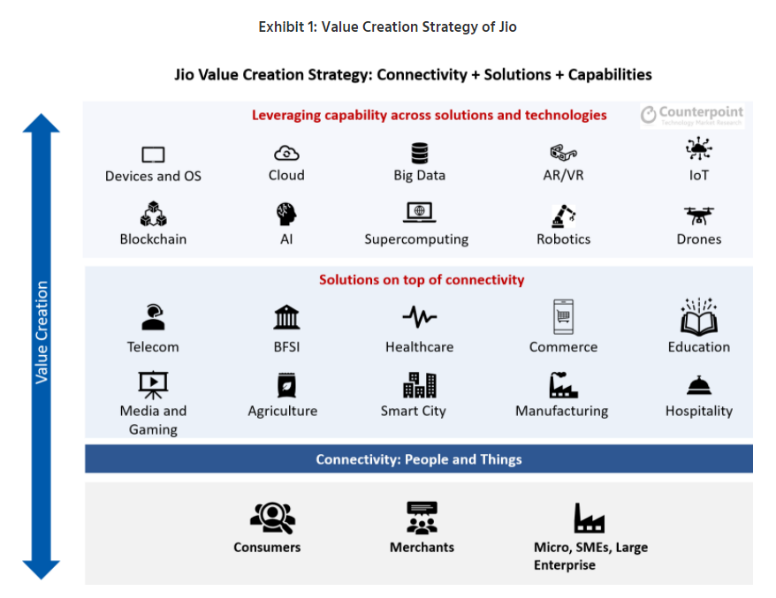Partner Ecosystem: Way forward for CSPs in a hyper-growth digital world
Do what you do best and partner for the rest! This fits well with how Telcos are approaching the digitalization wave. Telecom leaders are aware of what value partners can bring in, as CSPs look to expand their value chain and revenue streams by exploring cross-industry business opportunities. In fact, the partnership strategy is not new to Telcos, but it indeed is becoming prominent with the evolving business models as 5G, IoT becomes mainstream. The partner ecosystem enables CSPs to accelerate innovation, increase agility and lower the operating cost by offsetting pressure from traditional services.
Many CSPs have seized partnerships with other industry verticals to capitalize on the 5G promise. Deutsche Telecom (DT) announced a 5G partnership to support the smart industries and accelerate digitalization in the industry. Reliance Jio, the Indian operator, has also transformed itself into a digital service provider by offering an array of services under the JIO brand (see figure 1).
Telia created Division X, a separate business to focus on emerging businesses such as IoT, 5G, and AI by creating a digital ecosystem-enabled platform to monetize joint offerings with partners.
We have seen both horizontal as well as vertical expansion by operators to add more value to the telco value chain. The diversification of services through collaboration and co-creation with the B2B2X business model is the new norm.
So how well are Telcos able to adopt the partner ecosystem strategy? We might have seen some progress, but how can they accelerate this to match the evolving customer needs. A telco needs to define its role in the evolving value chain and ensure a successful transition into the role of an enabler or provider of new-age services.
What Telcos can bring to the table?
Playing to their strength while adopting the digital transition.
CSPs need to constantly keep innovating the service offerings to entice the digitally savvy enterprise and end consumers. They need to start thinking like Google, Amazon, or any webscale organization to embrace an end-to-end digital transformation. The traditional way is not sustainable and demands a reshuffle of the strategic focus and priorities set in the past. Telcos need to move away from connectivity providers’ perception and start leveraging their core competencies such as solid customer base, insights into customer needs, network assets as a platform to digital disruptors, and more.
The way forward strategy: Partner Ecosystem development
Telcos have been working with interconnect partners, roaming, MVNOs, other value-added service providers. But these partnerships are low involvement, with limited monitoring and contract management requirements. The new partnerships are becoming more complex and dynamic with the diversification of services and partners from across industry verticals.
One of the reports by a leading analyst organization revealed that CSPs are already cut out of strategic engagements and solution building with enterprise partners. CSPs are playing a secondary supplier role in 40% of enterprise 5G deals are signed. To capitalize on these opportunities, CSPs need to strengthen their position by creating a robust digital partner ecosystem that can deliver value with their offerings.
Where the telcos will see the most opportunities in near time:
Research shows that key industry verticals such as industrial automation, healthcare, connected cars, intelligent homes represent a $1 trillion opportunity by 2023. Telcos will support a wide variety of use cases with network slicing, edge computing and AI. However, a clear monetization strategy will have to be in place for these new revenue streams.
Healthcare: As there is a radical shift towards digital health services, it has created an opportunity for Telcos to offer telemedicine solutions for remote health monitoring and health management for people with chronic diseases. The low latency and ultra-reliable connectivity will provide accurate feeling and tactile interaction in remote surgical procedures.
Mobility: As the 5G networks roll out across cities and bring together existing wireless networks, they can provide real-time, end-to-end visibility into the transportation systems. Increased fleet visibility will also translate into better safety and reliability for travelers.
Gaming: 63% percent of gamers play with other fellow gamers. In fact, massively multiplayer online games make up the most popular gaming genre globally, but most gamers, especially multiplayer gamers, must deal with lag. By utilizing 5G end-to-end network slicing, operators can create a low latency-focused slice to offer an enhanced gaming experience, while a separate high bandwidth slice can be created for video streamers within the same mobile network.
Smart Industries: 5G will help create a more agile, fully connected, and automated end-to-end manufacturing experience from design to distribution. Supported by the unprecedented levels of AI/ML and automation, the smart industries will make faster decisions and quickly adjust to changes in near real-time.
While the opportunities are immense, Telcos alone cannot deliver the success that 5G promises. CSPs need to establish successful partnerships with digital incumbents and innovative startups on both the technology and service front to deliver the 5G promise to its enterprise and end consumers. One certain thing for success is, CSPs need to bring cooperation and collaboration with partners at the center of value creation.
Subex hosted a webinar on how digital partner ecosystem will help CSPs deliver the 5G promise. Watch the webinar on “Innovating and Accelerating Growth in the 5G world” to take a deep dive into the new generation of the partner ecosystem that telcos need to develop to ensure seamless delivery of 5G enabled services.
Register for more details and to book your slot!




